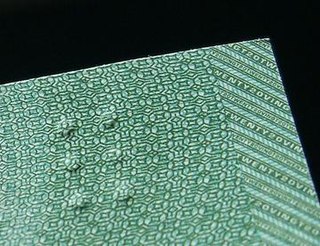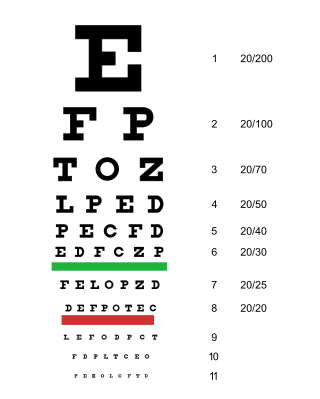
Assistive technology (AT) is a term for assistive, adaptive, and rehabilitative devices for people with disabilities and the elderly. Disabled people often have difficulty performing activities of daily living (ADLs) independently, or even with assistance. ADLs are self-care activities that include toileting, mobility (ambulation), eating, bathing, dressing, grooming, and personal device care. Assistive technology can ameliorate the effects of disabilities that limit the ability to perform ADLs. Assistive technology promotes greater independence by enabling people to perform tasks they were formerly unable to accomplish, or had great difficulty accomplishing, by providing enhancements to, or changing methods of interacting with, the technology needed to accomplish such tasks. For example, wheelchairs provide independent mobility for those who cannot walk, while assistive eating devices can enable people who cannot feed themselves to do so. Due to assistive technology, disabled people have an opportunity of a more positive and easygoing lifestyle, with an increase in "social participation," "security and control," and a greater chance to "reduce institutional costs without significantly increasing household expenses." In schools, assistive technology can be critical in allowing students with disabilities to access the general education curriculum. Students who experience challenges writing or keyboarding, for example, can use voice recognition software instead. Assistive technologies assist people who are recovering from strokes and people who have sustained injuries that affect their daily tasks.

Braille is a tactile writing system used by people who are visually impaired. It can be read either on embossed paper or by using refreshable braille displays that connect to computers and smartphone devices. Braille can be written using a slate and stylus, a braille writer, an electronic braille notetaker or with the use of a computer connected to a braille embosser.

A screen reader is a form of assistive technology (AT) that renders text and image content as speech or braille output. Screen readers are essential to people who are blind, and are useful to people who are visually impaired, illiterate, or have a learning disability. Screen readers are software applications that attempt to convey what people with normal eyesight see on a display to their users via non-visual means, like text-to-speech, sound icons, or a braille device. They do this by applying a wide variety of techniques that include, for example, interacting with dedicated accessibility APIs, using various operating system features, and employing hooking techniques.

A screen magnifier is software that interfaces with a computer's graphical output to present enlarged screen content. By enlarging part of a screen, people with visual impairments can better see words and images. This type of assistive technology is useful for people with some functional vision; people with visual impairments and little or no functional vision usually use a screen reader.

The Perkins Brailler is a "braille typewriter" with a key corresponding to each of the six dots of the braille code, a space key, a backspace key, and a line space key. Like a manual typewriter, it has two side knobs to advance paper through the machine and a carriage return lever above the keys. The rollers that hold and advance the paper have grooves designed to avoid crushing the raised dots the brailler creates.

The Canadian currency tactile feature is a feature on the Canadian Journey and Frontier series of Canadian banknotes to aid people who are visually impaired to identify the notes. The feature indicates the banknote denomination in the upper left corner of the face side of the bill using a series of raised dots. It was suggested by Bruno Thériault, an administrator for the Canadian National Institute for the Blind, and designed by Susan Lederman, a professor of psychology at Queen's University.
ZoomText is a screen magnifier for Microsoft Windows developed by Ai Squared which was acquired by Freedom Scientific in 2016. The first version was released for DOS in 1988, and the first version for Windows was released in 1991. ZoomText is available in two editions: ZoomText Magnifier and ZoomText Magnifier/Reader, which includes a built-in screen reader.

Visual or vision impairment is the partial or total inability of visual perception. For the former and latter case, the terms low vision and blindness respectively are often used. In the absence of treatment such as corrective eyewear, assistive devices, and medical treatment – visual impairment may cause the individual difficulties with normal daily tasks including reading and walking. In addition to the various permanent conditions, fleeting temporary vision impairment, amaurosis fugax, may occur, and may indicate serious medical problems.
The Optacon is an electromechanical device that enables blind people to read printed material that has not been transcribed into Braille. The device consists of two parts: a scanner which the user runs over the material to be read, and a finger pad which translates the words into vibrations felt on the finger tips. The Optacon was conceived by John Linvill, a professor of Electrical Engineering at Stanford University, and developed with researchers at Stanford Research Institute. Telesensory Systems manufactured the device from 1971 until it was discontinued in 1996. Although effective once mastered, it was expensive and took many hours of training to reach competency. In 2005, TSI suddenly shut down. Employees were "walked out" of the building and lost accrued vacation time, medical insurance, and all benefits. Customers could not buy new machines or get existing machines fixed. Some work was done by other companies but no device with the versatility of the Optacon had been developed as of 2007. Many blind people continue to use their Optacons to this day. The Optacon offers capabilities that no other device offers including the ability to see a printed page or computer screen as it truly appears including drawings, typefaces, and specialized text layouts.
Tactile graphics, including tactile pictures, tactile diagrams, tactile maps, and tactile graphs, are images that use raised surfaces so that a visually impaired person can feel them. They are used to convey non-textual information such as maps, paintings, graphs and diagrams.

Since the Global Positioning System (GPS) was introduced in the late 1980s there have been many attempts to integrate it into a navigation-assistance system for blind and visually impaired people.

Video magnifiers are electronic devices that use a camera and a display screen to perform digital magnification of printed materials. The display screen is usually LCD or a similar flat-screen technology, and the device usually includes a lamp to illuminate the source material. Video magnifiers are designed to be mostly used by people with low vision that cannot be helped using a conventional magnifying glass.
Dolphin Computer Access is a British company based in Worcester that designs, creates and sells software for people who are blind or have vision and print impairments, dyslexia and other specific learning difficulties. The company was set up in 1986 and now has offices in the United Kingdom, United States, Sweden and Norway. Through the use of Dolphin's screen enlargers, screen readers and braille output, users can operate word processors, spreadsheets, databases and the internet. The company's customers include Microsoft, the Inland Revenue, the BBC, the Royal Air Force, New College Worcester and Vodafone.
Braille technology is assistive technology which allows blind or visually impaired people to read, write, or manipulate braille electronically. This technology allows users to do common tasks such as writing, browsing the Internet, typing in Braille and printing in text, engaging in chat, downloading files and music, using electronic mail, burning music, and reading documents. It also allows blind or visually impaired students to complete all assignments in school as the rest of their sighted classmates and allows them to take courses online. It enables professionals to do their jobs and teachers to lecture using hardware and software applications. The advances in Braille technology are meaningful because blind people can access more texts, books, and libraries, and it also facilitates the printing of Braille texts.

John G. Linvill was an American professor (emeritus) of Electrical engineering at Stanford University, known for his pioneering work in higher education, integrated circuits and semiconductors, and for development of the Optacon reading machine for the blind.
A sighted child who is reading at a basic level should be able to understand common words and answer simple questions about the information presented. They should also have enough fluency to get through the material in a timely manner. Over the course of a child's education, these foundations are built on to teach higher levels of math, science, and comprehension skills. Children who are blind not only have the education disadvantage of not being able to see: they also miss out on the very fundamental parts of early and advanced education if not provided with the necessary tools.
James C. Bliss was an American electrical engineer and entrepreneur best known for his pioneering role in developing technological aids for visually impaired people.
Vinux is a Linux distribution which has been specially designed for blind and partially sighted users. Specifically it is a remastered version of the Ubuntu distribution and provides users with two screen readers, two full-screen magnifiers, global font-size and colour changing facilities. The system also supports USB Braille displays.

The Lighthouse of Houston is a private, non-profit education and service center dedicated to assisting blind and visually impaired people in the Houston, Texas metropolitan area to live independently. The Lighthouse serves approximately 9,000 people each year and is a member agency of the United Way of Greater Houston.
Alternative formats include audio, braille, electronic or large print versions of standard print such as educational material, textbooks, information leaflets, and even people's personal bills and letters. Alternative formats are created to help people who are blind or visually impaired to gain access to information either by sight, by hearing (audio) or by touch (braille).











